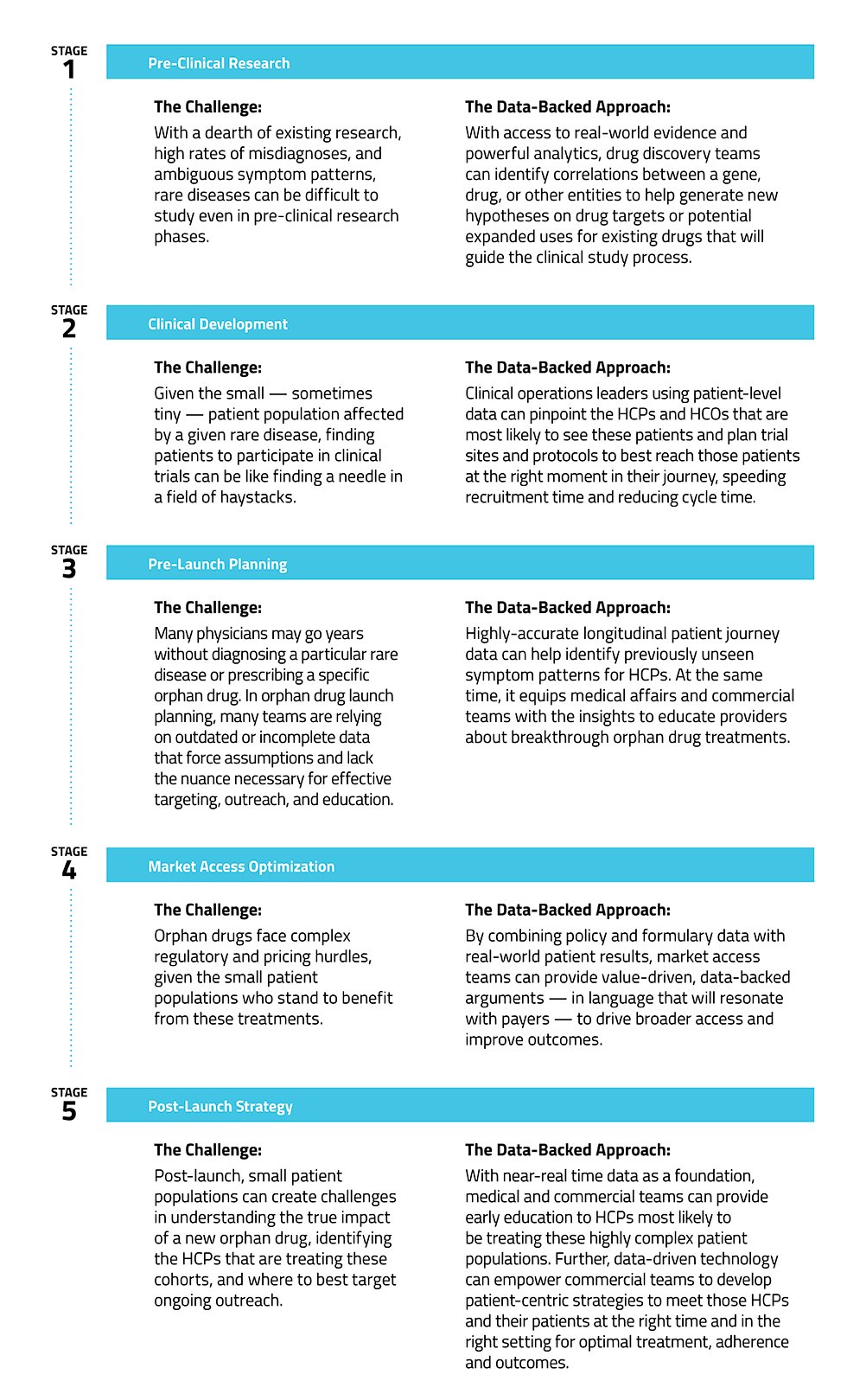Data-Driven Strategies to Power Every Stage of the Orphan Drug Lifecycle

Since passing in 1983, the Orphan Drug Act has facilitated the research of thousands of orphan drug candidates and hundreds of therapy approvals. While less than 10 orphan drug products were brought to market between 1973 and 1983, over 730 have been developed and approved for more than 250 rare diseases since the Act’s passage.
And these therapies have a powerful impact. Take acute lymphoblastic leukemia (ALL), estimated to be diagnosed in 5,700 people this year. The 5-year survival rate for children under 20 is 89%; for adults over 20, the 5-year survival rate is only 38%. That said, recent breakthrough therapies are significantly lengthening the lives of ALL patients.
Given the highly specific patient population and resulting low chance of profitability, though, these therapies would likely never have been developed — let alone commercialized and widely utilized — without the incentives provided by the Orphan Drug Act.
But bringing any drug through to commercialization is fraught with challenges from the preliminary research phases all the way through launch and post-launch marketing. And when working with rare diseases that impact only a small patient population, like ALL, those obstacles only become more daunting. While the Orphan Drug Act addresses important elements of the drug development equation with financial incentives to recoup lost costs, organizations working on orphan drugs still have complex questions to answer at every stage of the development life cycle:
- How do we wade through high rates of misdiagnosis to understand the journeys of relevant patients?
- How do we find, let alone recruit, enough patients to power a clinical trial?
- How do we identify the healthcare providers (HCPs) and healthcare organizations (HCOs) that are most likely to come across these patients?
Leveraged effectively, big data can answer these questions, providing tools for teams across the life sciences enterprise to bring important orphan drug therapies to market: Returning to ALL, the Orphan Drug Act unlocked multiple new therapy options to treat the disease, resulting in better outcomes. Komodo data found the usage of one orphan drug, for B-cell precursor ALL, increased by 70% in adults and 225% in pediatric patients between 2016 and 2020, and supported outcomes in both first-line and subsequent-line treatments across age groups.
Returning to ALL, the Orphan Drug Act unlocked multiple new therapy options to treat the disease, resulting in better outcomes. Komodo data found the usage of one orphan drug, for B-cell precursor ALL, increased by 70% in adults and 225% in pediatric patients between 2016 and 2020, and supported outcomes in both first-line and subsequent-line treatments across age groups.
By diving into the full healthcare journeys of millions of patients, data-driven technologies are empowering teams across every aspect of the life sciences business to understand rare diseases more deeply, run clinical trials more effectively, and bring powerful options to patients who have previously had none.







